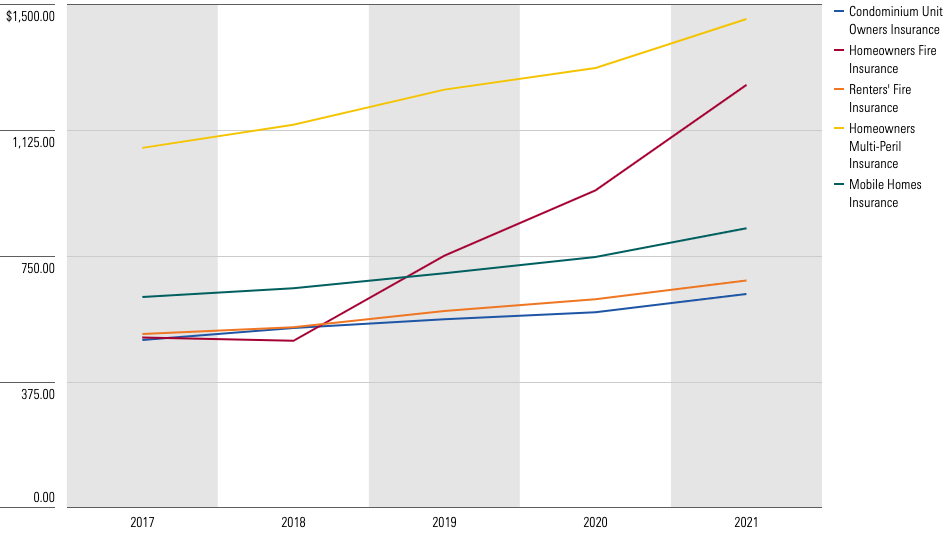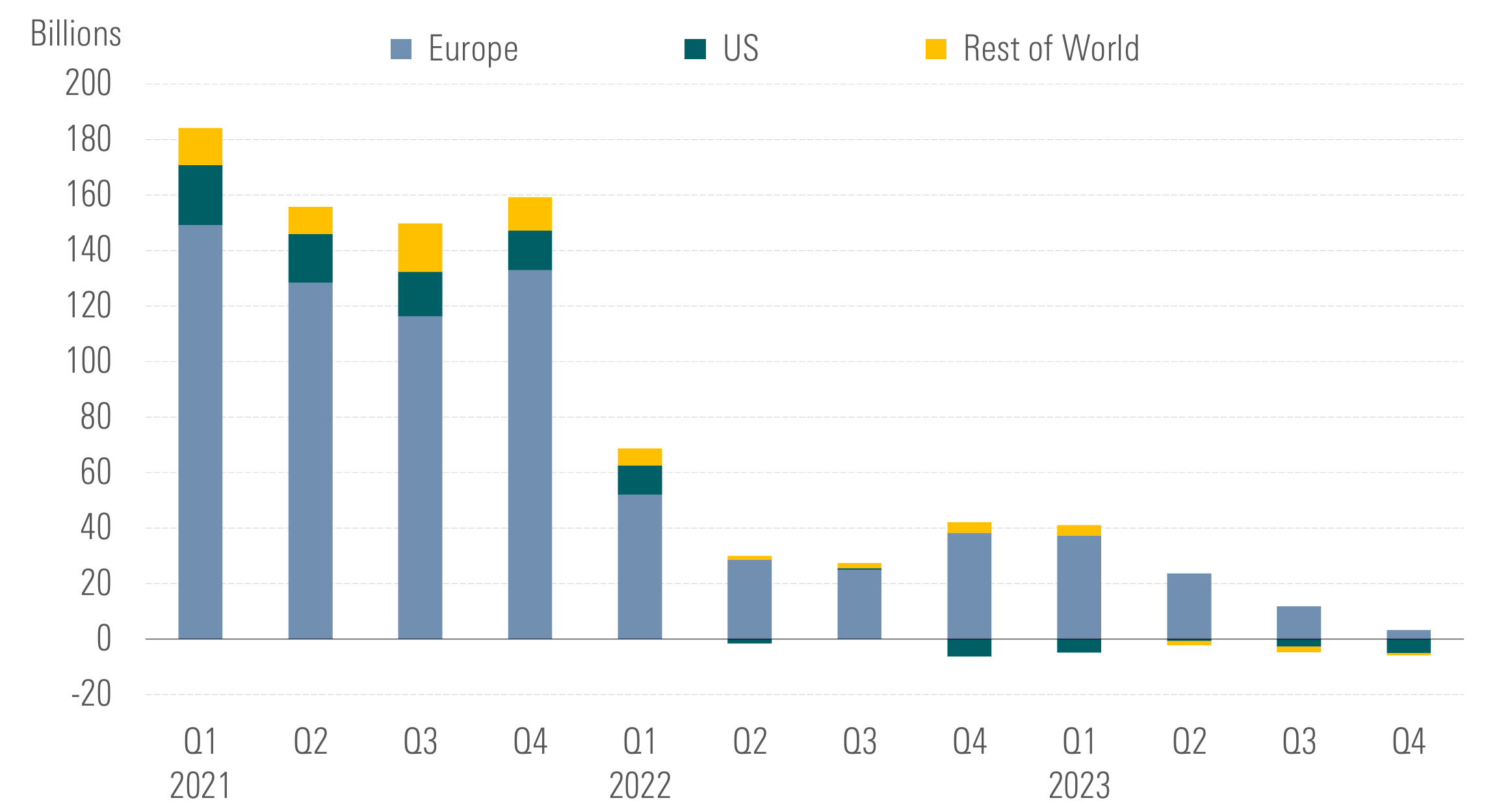Earth Day 2024: Must-Know Climate Statistics
Understand the effects of climate change and how investors are reacting.

Monday is Earth Day. This year, the theme is “Planet vs. Plastics.”
Though plastic use soared throughout the 20th century, it quickly became clear that plastics were having a detrimental impact on the environment. Now, we know that once created, plastics stay in the environment forever, pose a risk to human health, and contribute to climate change.
In the spirit of Earth Day, we’re highlighting some statistics about plastic use, its impact on climate change, and how investors are reacting. These statistics highlight the magnitude of this issue and the associated risks and opportunities.
Here are some statistics investors must know.
Planet vs. Plastics
Plastic was introduced in the 1950s, and 8.3 billion metric tons of it had been produced by 2017. In 2022, the worldwide production of plastics was 400.3 million metric tons.
And most of that plastic sticks around: As of 2017, 79% of all plastic that had ever been made still sits in landfills or the natural environment (except for the small amount that has been incinerated or recycled).
Plastics Largely Sit in Landfills or the Natural Environment

A few more statistics about global plastic use:
- The world produces more than 26 million tons of polystyrene (plastic foam) each year.
- Each year, the average American ingests more than 70,000 microplastics in their drinking water supply. These plastics originate from multiple sources but are mostly linked to littering, stormwater runoff, and poor wastewater management in treatment facilities.
Plastic Production Contributes to a Changing Climate
Plastic production is directly tied to pollution and climate change.
- About 4% of total greenhouse gas emissions are generated by the production, conversion, and waste management of plastics.
- Ninety-three percent of plastics are currently produced with fossil fuels.
- Emissions associated with fossil-based plastics will more than double, and global plastic use is projected to triple, leading to a doubling of plastic leakage to the environment (in the absence of more stringent policies).
- More than 15% of methane emissions come from landfills, where most single-use plastics are sent. The disposal of more plastics in landfills leads to increases in landfill size and emissions.
The magnitude of climate change has been consistently increasing in recent decades, and rising global temperature has a direct impact on our lives.
- Earth’s temperature has risen by an average of 0.11 degrees Fahrenheit (0.06 degrees Celsius) per decade since 1850, or 2 degrees Fahrenheit in total.
- The rate of warming since 1982 is more than 3 times as fast: 0.36 degrees Fahrenheit (0.20 degrees Celsius) per decade.
- The 10 warmest years in the historical record have all occurred in the past decade (2014-23).
- 2023 was the warmest year since global records began in 1850 by a wide margin.
Climate change brings extreme weather events that result in heavy rains, floods, wind, snow, or temperature changes that can stress or destroy existing infrastructure and facilities, particularly along coastlines.
- Nearly 40% of the US population, or roughly the population of Japan, lives in coastal counties.
- About 3.6 billion people worldwide already live in areas highly susceptible to climate change. Between 2030 and 2050, climate change is expected to cause approximately 250,000 additional deaths per year from undernutrition, malaria, and heat stress alone. The direct health costs are estimated to be between $2 billion and $4 billion per year by 2030.
Climate change also has direct economic and financial impacts. In 2023, the US experienced 28 separate weather and climate disasters costing at least $1 billion.
One impact of these weather events is the increased cost of home insurance: In California, historic wildfire losses led home insurance premiums to increase about 35% on average between 2017 and 2022. These premiums are still lower than other large states with major climate risks, including Louisiana, Texas, and Florida.
California Average Premiums for Home and Fire Insurance, 2017-2021

Other financial impacts of climate change include:
- Residential properties exposed to flood risk are overvalued by $121 billion to $237 billion, depending on the discount rate.
- Climate-change-induced disasters could put at least $314 billion of annual wheat, rice, maize, and soybean production in jeopardy.
What Are Investors Doing to Manage This Risk?
As governments work to create infrastructure that reflects the reality of a changing climate, individuals are also seeking opportunities to invest in this new world and mitigate the associated risks.
The growth of sustainable funds magnifies this interest. From 2019 through 2022, global sustainable fund flows grew threefold, though they experienced their first-ever net quarterly outflows in the fourth quarter of 2023.
Quarterly Global Sustainable Fund Flows

Fund assets rose by 8.2% to $3 trillion as of the end of 2023, from $2.7 trillion three months earlier, against a mixed and turbulent macroeconomic backdrop.
Quarterly Global Sustainable Fund Assets

At a regulatory level, US and European government programs are incentivizing climate technology.
- The US Inflation Reduction Act allocates over $370 billion to spur innovations in energy technologies and encourage adaptation to climate change.
- GHG emissions in the US are projected to decline by 33% to 40% by 2030, compared with 2005 levels. This is due to the funding and financial incentives of the Inflation Reduction Act to promote the deployment of low- and no-GHG emissions technologies.
Here’s a look at the state of other key climate investments:
- Venture capital investment in climate technology and sustainability fund investment have grown in popularity in recent years but were susceptible to market conditions in 2023. Overall VC investment in climate tech fell 14.5% to $41.1 billion in 2023, reflecting a more challenging environment for VC investing. The high point was 2021 with $51.0 billion in total VC deal value.
- A cumulative $3 trillion in green bonds have been issued to date, and around $200 billion issued in 2024 as of April.
- More than 1,500 organizations and investors representing over $40 trillion in assets have committed to fossil fuel divestment to combat climate change.
- Eighty-nine asset owners with a combined $9.5 trillion in assets under management have joined the UN-convened Net-Zero Asset Owner Alliance.
- Sixty-nine asset owners have set their own net zero targets.
“[The transition to a low-carbon economy] introduces its own risks—specifically, transition risk,” says Alicia White, senior product manager for climate solutions at Morningstar Sustainalytics. “Investors need to understand company-level exposure to transition risk and how this risk is managed.”
To understand more about this risk, investors can use Morningstar Sustainalytics’ Low Carbon Transition Ratings and Physical Climate Risk Metrics. These metrics are designed to aid investors seeking innovation in climate-focused investments, particularly in two key areas: identifying companies at the forefront of global decarbonization and assessing physical risks associated with climate change within companies.
The author or authors do not own shares in any securities mentioned in this article. Find out about Morningstar’s editorial policies.

/s3.amazonaws.com/arc-authors/morningstar/05d2e9ba-68fe-4cdf-8c51-0cb579073eb2.jpg)
/cloudfront-us-east-1.images.arcpublishing.com/morningstar/PJQ2TFVCOFACVODYK7FJ2Q3J2U.png)
/cloudfront-us-east-1.images.arcpublishing.com/morningstar/PVJSLSCNFRF7DGSEJSCWXZHDFQ.jpg)
/cloudfront-us-east-1.images.arcpublishing.com/morningstar/NNGJ3G4COBBN5NSKSKMWOVYSMA.png)
:quality(80)/s3.amazonaws.com/arc-authors/morningstar/05d2e9ba-68fe-4cdf-8c51-0cb579073eb2.jpg)